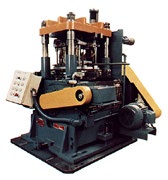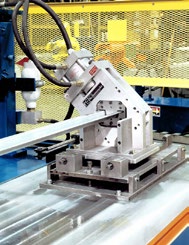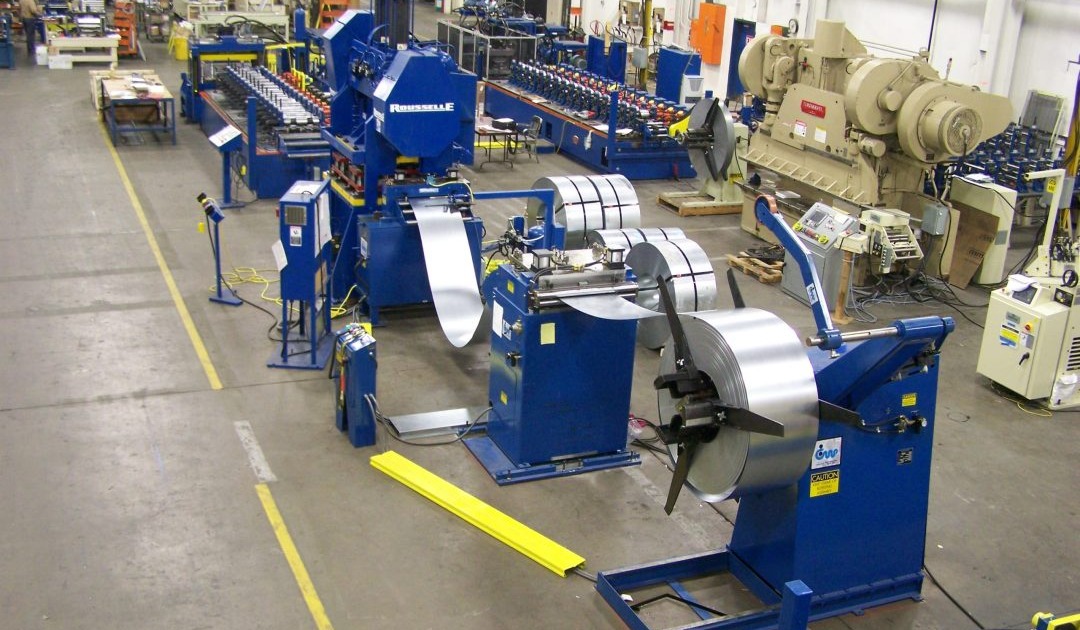To realize the maximum production capabilities of a roll forming machine (continuous operation and the improved product consistency available by feeding coiled stock), a cutoff machine becomes an important part of the complete roll forming system.
Cutoff Machine Function

The machine in most general use is similar the 4-post model above and might be pictured as an under-driven press with rails fastened to the bolster plate and to the ram, with the flying cutoff die being free to slide on the rails from right to left. These machines function to cut the formed section to length as it exits the roll forming machine without stopping the forward progress of the section. The section passes through the die and travels along a runout table until the desired length is measured, either via a rotary encoder, photo-eye, limit switch or a positive (mechanical) stop. This target initiates the cutting cycle an during the period of cutting, the die moves from right to left on its slide rails. Once the cut is completed, it returns automatically to its starting position. This is the most simplistic way to operate. However, the cut length tolerance can be very broad, depending on line speed, type of cutoff press and method of length control employed.

Other Methods of Actuation of a Cutoff Operation
- Open Loop Measuring System with rotary Encoder
- Closed Loop Measuring System with rotary Encoder
- Mechanical piloting or pickup on a prenotched area triggered by a limit switch.
Cutoff Length Tolerance
A general illustration of the length tolerance as a function of line speed and method of length control is shown in the above figure. It is not within the scope of this discussion to deal in greater detail on the subject. However, cutoff performance, die design, triggering method, die acceleration and material handling, all influence rolling machine speeds, the lengths that can be cut, the length tolerance that can be maintained and in turn, the investment dollars involved. A realistic evaluation of the requirement should be made for the budget available and the end-use requirements.



